Why Is Your Samsung French Door Refrigerator Not Making Ice? Get Answers
We may earn affiliate fees for purchases using our links (at no additional cost to you).
Is your Samsung French door refrigerator failing to produce ice? Don’t worry, we’ve got you covered!
Discover the reasons behind this frustrating issue and learn how to troubleshoot and fix it effectively.
In this article, we’ll delve into the possible causes, explore the inner workings of your refrigerator’s ice-making mechanism, and provide you with expert tips to restore ice production.
Say goodbye to warm drinks and hello to refreshing ice-cold beverages with our comprehensive guide.

Why Is Your Samsung French Door Refrigerator Not Making Ice?
Possible reasons for your Samsung French door refrigerator not making ice include a faulty ice maker, a clogged water line, or improper temperature settings.
Check the ice maker, inspect the water line, and ensure the temperature is set correctly to troubleshoot and resolve the issue.
Common Causes of Ice-Making Issues in Samsung French Door Refrigerators
There are several common causes behind ice-making problems in these refrigerators:
1. Faulty Ice Maker:
The ice maker itself may be malfunctioning. Check if the ice maker is properly connected, and inspect for any visible damage or blockages. If necessary, consider replacing the ice maker unit.
2. Clogged Water Line:
A clogged water line can prevent water from reaching the ice maker. Inspect the water line for any kinks, twists, or obstructions.
Clear any debris or ice buildup and ensure a steady flow of water to the ice maker.
3. Incorrect Temperature Settings:
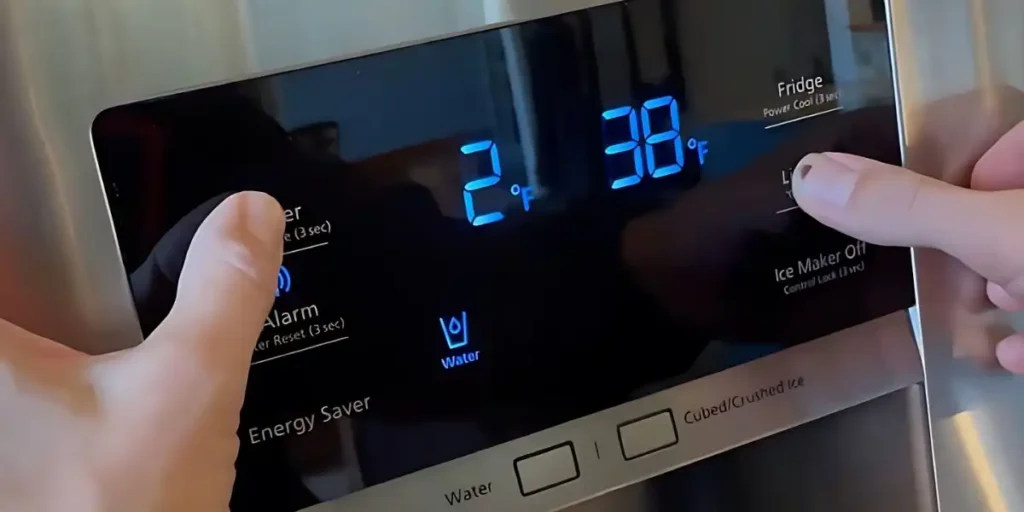
Improper temperature settings can hinder ice production. Ensure that the freezer compartment is set to the recommended temperature, usually around 0°F (-18°C). Adjust the temperature if necessary and give the refrigerator some time to stabilize.
4. Water Inlet Valve Issues:
A faulty water inlet valve can disrupt water flow to the ice maker. Check if the valve is fully open and inspect for any leaks or damage.
If needed, replace the water inlet valve to restore the proper water supply.
5. Frozen Water Fill Tube:
A frozen water fill tube can obstruct water flow to the ice maker. Locate the fill tube, typically located near the back of the freezer, and carefully thaw it using a hairdryer or warm water. Be cautious not to damage the tube.
6. Insufficient Water Pressure:
Low water pressure can hinder ice production. Check the water pressure from your water supply and ensure it meets the manufacturer’s recommendations.
Consult a professional plumber if necessary to address any water pressure issues.
7. Defective Temperature Sensor:
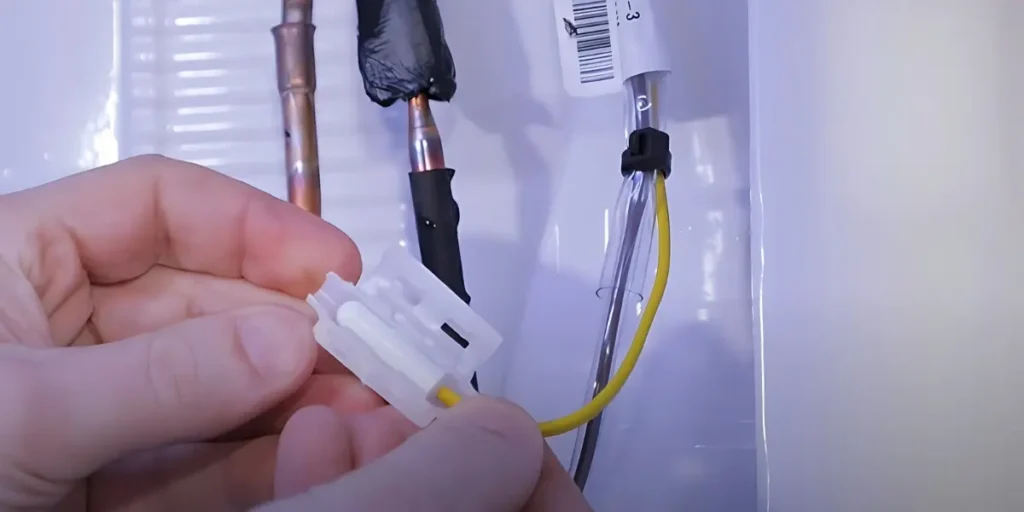
A faulty temperature sensor can disrupt the ice-making process. Verify if the temperature sensor is functioning correctly and replace it if needed.
Refer to the refrigerator’s user manual for guidance on locating and replacing the sensor.
Factors Affecting Ice Production in Samsung French Door Refrigerators
Understanding these factors can help you diagnose and address the problem effectively:
1. Temperature Settings:
Improper temperature settings can affect ice production. Ensure that the freezer compartment is set to the recommended temperature, typically around 0°F (-18°C).
If the temperature is too high, it can hinder the ice-making process. Adjust the settings accordingly and give the refrigerator time to stabilize.
2. Water Supply:
A steady and adequate water supply is essential for ice production. Check the water line leading to the refrigerator and ensure it is properly connected and not kinked or obstructed.
Inspect the water shut-off valve to ensure it is fully open. Additionally, consider replacing the water filter if it is clogged or past its recommended lifespan.
3. Water Inlet Valve:

The water inlet valve controls the flow of water into the ice maker. If it is defective or malfunctioning, it can disrupt ice production. Inspect the valve for any leaks or damage and replace it if necessary.
4. Ice Maker Components:
Various components within the ice maker can impact ice production. Inspect the ice maker unit for any visible damage or blockages.
Check the ice mold, ice level sensor, and ice dispenser mechanism to ensure they are functioning properly.
Clear any obstructions or debris that may be affecting their operation.
5. Air Circulation:
Proper air circulation within the freezer compartment is crucial for ice production.
Ensure that there is no obstruction to the airflow, such as overpacking the freezer or blocking the vents.
Maintain sufficient space around the ice maker and avoid overcrowding the freezer with food items.
6. Refrigerator Maintenance:
Regular maintenance is key to optimal ice production. Keep the refrigerator clean, both inside and out, to prevent dust and debris from affecting its performance.
Periodically defrost the freezer to remove any ice buildup that may impede ice production.
7. Ambient Temperature:
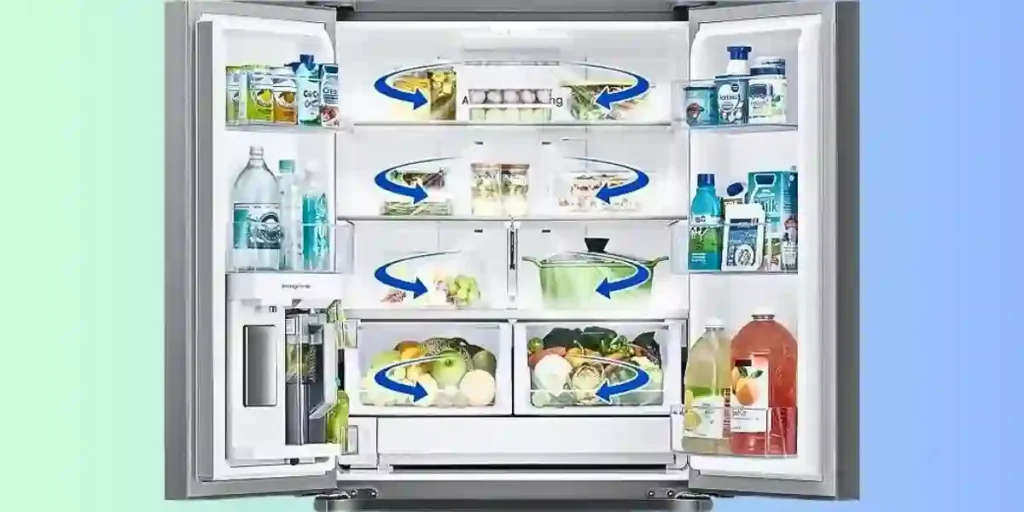
The ambient temperature of the environment in which the refrigerator is placed can impact ice production.
Extreme temperatures, particularly high heat, can affect the efficiency of the refrigerator’s cooling system.
Ensure that the refrigerator is placed in a well-ventilated area away from direct sunlight and other heat sources.
Troubleshooting Tips: How to Fix the Ice-Maker Problem in Your Samsung French Door Refrigerator
Let’s dive into troubleshooting the ice-maker problem step by step to get your ice production back on track.
Step 1: Check the Ice Maker Connections
Ensure that the ice maker is properly connected. Inspect the wiring and make sure there are no loose or damaged connections.
If you find any issues, securely reconnect or replace the connections.
Step 2: Clear Ice Maker Obstructions
Take a closer look at the ice maker and remove any visible obstructions such as ice buildup, debris, or foreign objects.
Clear the ice maker area to allow for unobstructed ice production.
Step 3: Inspect the Water Line
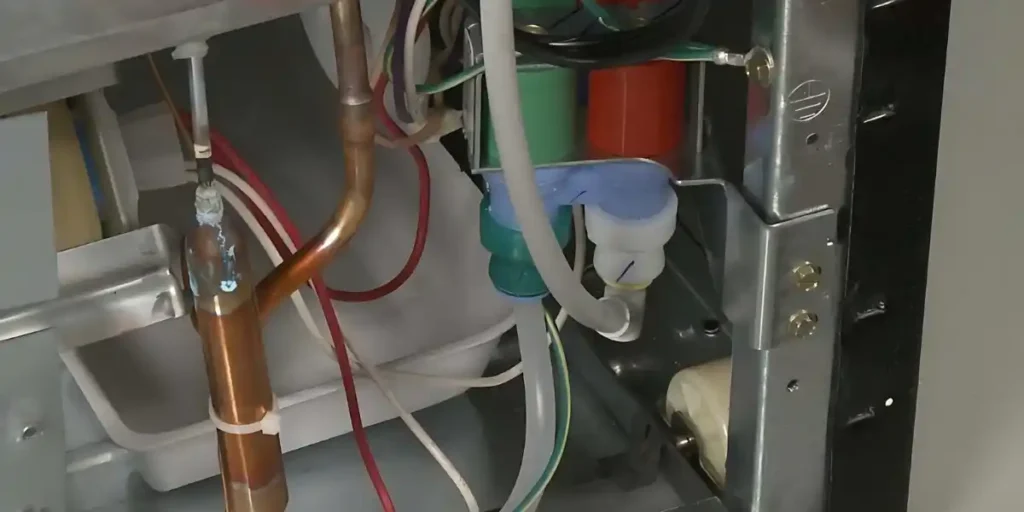
Check the water line leading to the ice maker for any kinks, twists, or blockages. Straighten out any kinks and ensure a smooth and uninterrupted flow of water.
Clear any debris or ice from the water line.
Step 4: Verify Proper Water Supply
Ensure that the water supply to the refrigerator is sufficient. Check the water shut-off valve and make sure it is fully open.
Additionally, examine the water filter and replace it if necessary. A clogged or old filter can hinder water flow to the ice maker.
Step 5: Adjust Freezer Temperature Settings
Make sure the freezer temperature is set correctly for ice production. Consult your refrigerator’s user manual to determine the recommended temperature.
Adjust the settings accordingly and give the refrigerator some time to stabilize.
Step 6: Test the Ice Maker
Initiate a manual ice-making cycle to test the functionality of the ice maker. Refer to your refrigerator’s user manual for instructions on how to activate the manual cycle.
Observe if the ice maker fills with water and if the ice cubes are properly formed.
Step 7: Reset the Ice Maker
If the ice maker is still not functioning correctly, try resetting it.
Locate the reset button or switch, usually found on the ice maker itself or in the control panel of the refrigerator. Follow the manufacturer’s instructions to reset the ice maker.
Maintenance Tips to Ensure Optimal Ice Production in Your Samsung French Door Refrigerator
To keep your Samsung French door refrigerator consistently producing ice, regular maintenance is key.
Follow these tips to ensure optimal ice production and keep your refrigerator running smoothly.
1. Clean the Ice Maker Regularly:
- Turn off the ice maker and unplug the refrigerator.
- Remove the ice bin and any ice cubes.
- Wipe the ice bin with a mild soap solution and rinse it thoroughly.
- Clean the ice maker unit with a soft cloth and warm soapy water.
- Ensure all parts are completely dry before reassembling.
2. Check the Water Filter:
- Consult your refrigerator’s user manual for the location of the water filter.
- Regularly check the filter for clogs or signs of wear.
- Replace the water filter according to the manufacturer’s recommendations, typically every 6 months.
3. Inspect and Clear the Water Line:
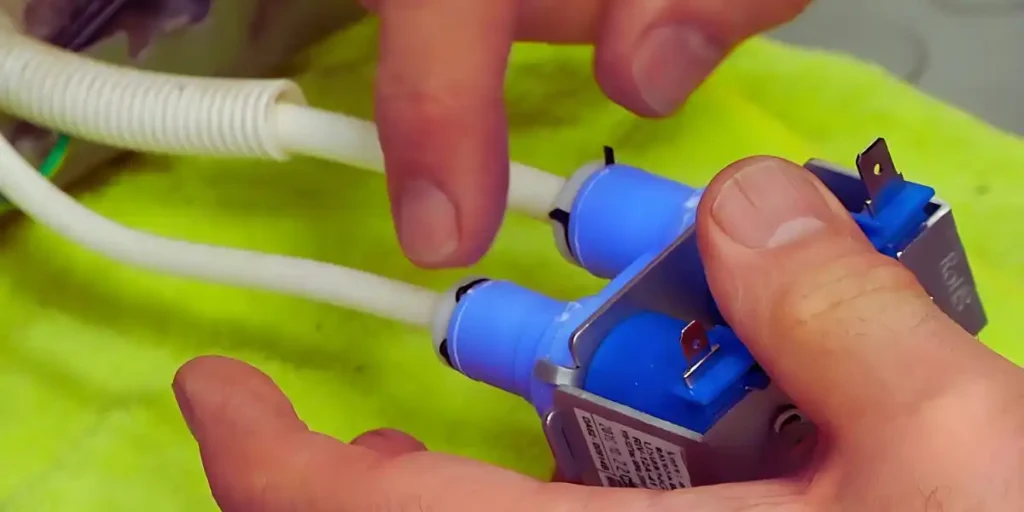
- Locate the water line that supplies water to the ice maker.
- Inspect the line for any kinks, bends, or obstructions.
- Straighten out any kinks and remove any blockages.
- Ensure a steady flow of water to the ice maker.
4. Ensure Proper Temperature Settings:
- Check and adjust the freezer temperature to the recommended level, typically around 0°F (-18°C).
- Avoid setting the freezer temperature too low, as it can lead to ice buildup and decreased ice production.
5. Maintain Adequate Freezer Air Circulation:
- Do not overload the freezer with food items, as it can restrict air circulation.
- Allow space for proper airflow around the ice maker and vents.
- Regularly organize and remove any items that may be blocking the vents.
6. Clean the Condenser Coils:
- Locate the condenser coils at the back or bottom of the refrigerator.
- Unplug the refrigerator before cleaning the coils.
- Use a vacuum cleaner or a brush to gently remove dust and debris from the coils.
- Clean the coils at least twice a year to ensure efficient cooling.
7. Keep the Freezer Door Seal Clean:
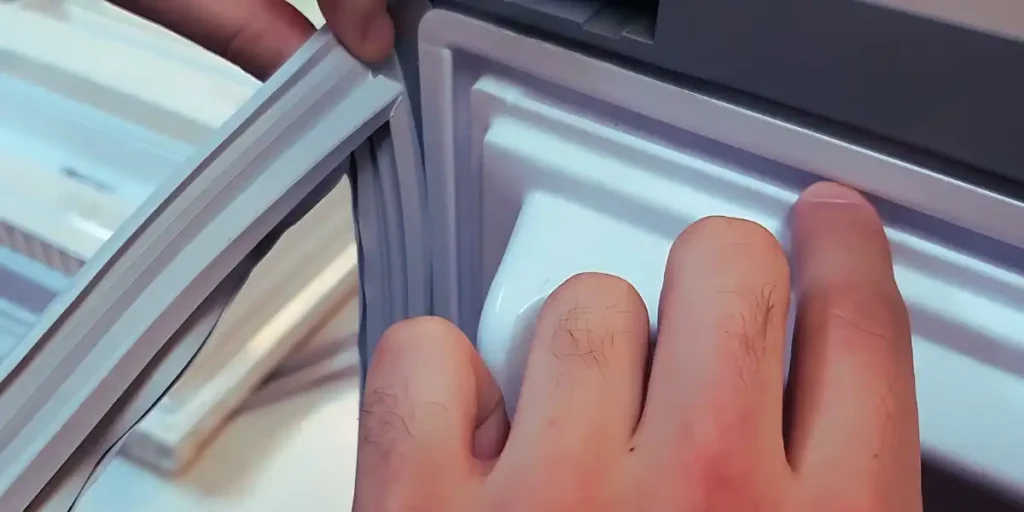
- Inspect the freezer door seal, also known as the gasket, for any debris or damage.
- Clean the seal regularly with mild detergent and warm water.
- Ensure the seal is tightly sealed when the door is closed to maintain proper temperature and ice production.
8. Regularly Defrost the Freezer:
- If your refrigerator is not frost-free, regularly defrost the freezer to prevent ice buildup.
- Follow the defrosting instructions provided in your refrigerator’s user manual.
- Remove any excess ice to ensure proper airflow and ice production.
FAQs
1. What Should I Do If The Water Dispenser On My Samsung French Door Refrigerator Works, But It’s Not Making Ice?
Consider inspecting the ice maker components, such as the water inlet valve or the ice mold thermostat, and seek assistance from a qualified technician if needed.
2. How Often Should The Ice Maker In A Samsung French Door Refrigerator Produce Ice?
3. Why Is My Samsung French Door Refrigerator Making Ice Slowly?
Verify the water supply, ensure proper temperature settings, and clean any potential blockages to resolve this problem.
4. Can A Power Outage Affect The Ice-Making Capability Of A Samsung French Door Refrigerator?
If the ice maker doesn’t start producing ice, check for any related issues and consider contacting support.
5. Is It Normal For A Samsung French Door Refrigerator’s Ice Maker To Make Unusual Noises?
If the noise continues, it’s advisable to contact Samsung customer support or a qualified technician for further assistance.
Conclusion
If your Samsung French door refrigerator is not making ice, don’t worry, you’re not alone.
There can be various reasons behind this issue, including a clogged water line, faulty components, or incorrect settings.
By troubleshooting the water supply, checking temperature settings, and ensuring proper installation, you can often resolve the problem.
However, if the issue persists, it’s wise to reach out to Samsung customer support or a professional technician for expert assistance.
